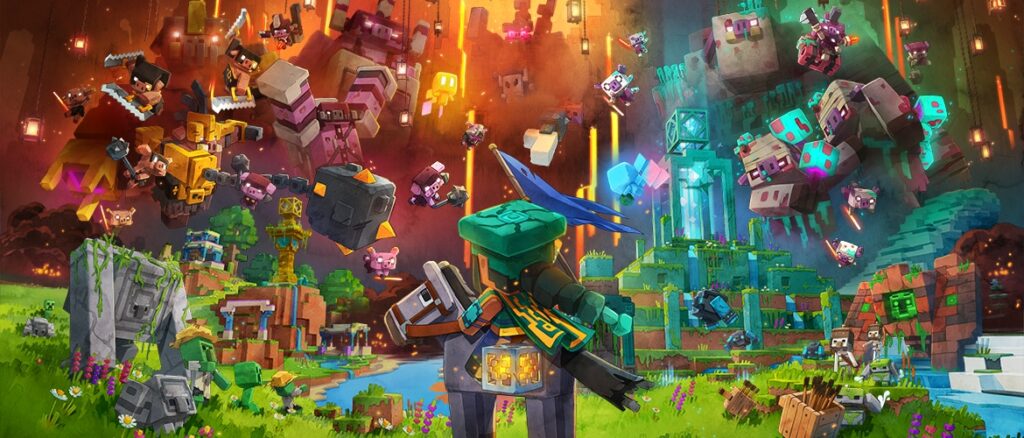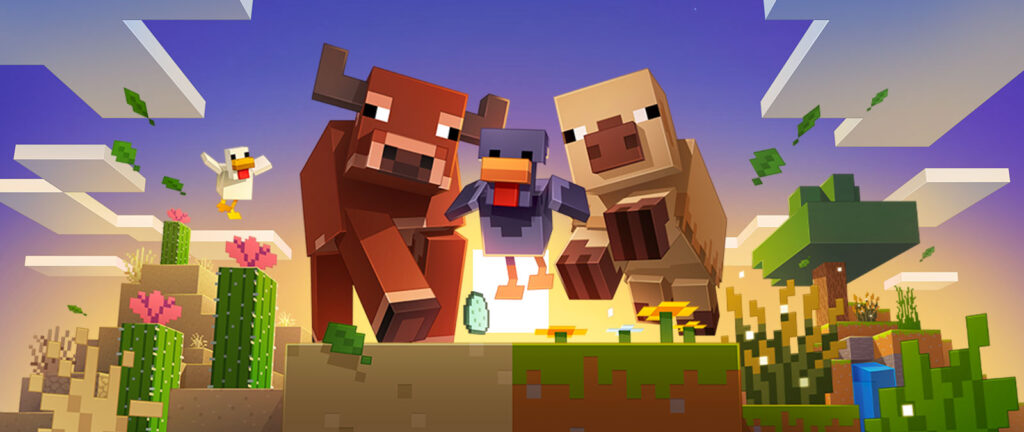Introduction to Game Economies
Within the realm of video games, the concept of a game economy refers to the systems and mechanics through which resources, currencies, and player progression are managed and balanced. An effective game economy creates a structured environment where players can realistically acquire, utilize, and trade resources, directly impacting their experience and strategy. As players engage with a game, their understanding of its economy becomes crucial to their success, influencing decisions and behaviors throughout their gameplay journey.
In analyzing economies in video games, two popular titles stand out: Minecraft and Grand Theft Auto V (GTA V). Both games offer unique approaches to resource management and in-game currencies that distinctly shape player interactions and overall game dynamics. In Minecraft, players enter a sandbox environment where creativity and resource gathering are essential. The game’s economy primarily revolves around crafting materials and survival needs, which encourages exploration and innovation. Resources, therefore, are abundant yet require strategic management to build and thrive in this pixelated world.
Conversely, GTA V presents a contrasting economic model. Set in a sprawling urban landscape, the game features a more traditional currency system where money plays a central role in player progression. Players engage in various criminal enterprises, undertake missions, and participate in heists to accumulate wealth. This currency-driven economy necessitates a different type of resource management, stressing quick decision-making and time management to maximize profits while minimizing risks. The balance of resources in GTA V greatly influences how players approach missions, interact with NPCs, and ultimately shape their virtual lives.

Through understanding these contrasting economic systems, players can appreciate how the balance of resources and currency management impacts their gameplay experience. This careful integration of economics into gameplay serves not only to enhance the challenges players face but also to enrich the storytelling and immersive quality of these diverse gaming landscapes.
Resource Systems: Minecraft vs. GTA V
The resource systems in Minecraft and GTA V illustrate two distinct approaches to resource management and economic progression in video games. In Minecraft, resources are predominantly gathered through exploration and crafting, enabling players to collect a variety of materials such as wood, stone, and ores. The game subtly emphasizes an open-world sandbox format, where players are encouraged to mine, farm, and gather resources as part of their survival journey. The crafting system further allows players to transform raw materials into useful items, which includes everything from tools to complex machinery. Players can trade these crafted items both with non-player characters and other players, fostering a community-driven economy based on resource sharing.

In contrast, GTA V operates within a structured environment where resources are primarily monetary in nature. Players acquire money through various means such as completing missions, engaging in heists, or performing illegal activities in the pursuit of financial gain. The game features a dynamic economy populated with properties, vehicles, and businesses that highlight the importance of strategic asset management. This monetary aspect introduces a different layer of resource management, where players must prioritize their financial decisions and investments to progress effectively. Additionally, GTA V’s online component further complicates the resource system, as players can engage in market trading of their assets, adding an extra layer of complexity to the in-game economy.
Ultimately, the resource systems in Minecraft and GTA V underscore the differences between sandbox and structured game formats. In Minecraft, resource generation and utilization are inherently tied to creativity and exploration, while in GTA V, the focus is on monetary assets and strategic investments. Players must adapt their strategies based on the type of resources they encounter, leading to varied experiences and gameplay dynamics in each title.

In-Game Progression: Fairness and Accessibility
In the realm of video games, the mechanisms of in-game progression play a pivotal role in shaping the player experience. In both Minecraft and GTA V, players can advance through various means, including crafting, completing quests, or acquiring in-game currency. However, the methods of progression and their implications for fairness and accessibility significantly differ between the two titles.
In Minecraft, progression generally revolves around crafting and exploration. Players gather resources from their environment to craft tools and building materials, enabling them to enhance their capabilities. The sandbox nature of Minecraft allows players to set their own goals, whether that be constructing elaborate structures or defeating formidable foes. This open-ended approach tends to foster a sense of achievement and fairness as players dictate their own pace of advancement, often leading to a more personalized gaming experience. Additionally, the community actively contributes to a wealth of guides and tutorials, further helping newcomers to progress effectively without facing overwhelming barriers.
Conversely, GTA V employs a more structured approach to in-game progression through missions and monetary acquisition. Players can earn money by completing a variety of quests, engaging in heists, and performing side activities. While this structured progression can provide clear milestones, it also introduces potential barriers. For example, players may find themselves required to complete specific missions or accumulate substantial funds to unlock more lucrative gameplay features. This can be particularly challenging for casual players or those unfamiliar with the game mechanics, leading to feelings of frustration and inequity.
Ultimately, both Minecraft and GTA V present unique experiences in regard to progression, with distinct impacts on fairness and accessibility. While the crafting-driven exploration in Minecraft fosters a sense of player-driven progression, GTA V’s mission-based model offers a more rigid structure that may pose challenges for some players. Examining these dynamics allows for a deeper understanding of how in-game systems can shape player experiences and overall satisfaction.
Conclusion and Player Impact
In analyzing the economic systems, resource balance, and fairness of in-game progression in Minecraft and GTA V, several critical differences and similarities emerge. Minecraft operates on a player-driven economy where resource gathering and crafting mechanics empower users to create their environments. This fosters a sense of ownership and creativity, as players can manipulate the game world to suit their visions. The fairness in Minecraft’s progression is largely attributed to its open-world structure, where players have the autonomy to determine their paths and make strategic choices regarding resource management.
Conversely, GTA V is positioned in a structured economy that often leans towards transactions involving virtual currency. The game highlights a more linear progression system where missions and activities can lead to wealth accumulation. However, the reliance on in-game purchases and the potential for pay-to-win mechanics may raise concerns about the fairness of its economic framework, which can alienate players invested in a level playing field. This disparity in resource balance shifts the focus from creativity to strategy and competition.
As players navigate these two distinct gaming experiences, the impact of economic structures on engagement and satisfaction becomes evident. While Minecraft may appeal more to those who value exploration and creativity, GTA V could attract players who enjoy competition and narrative-driven experiences. Reflecting on these contrasts, readers might consider their preferences within their gaming journeys. Do you favor the open-ended creativity of titles like Minecraft, or do you find the structured challenges and progression systems in GTA V more engaging? How do these elements influence your overall enjoyment of different games? Such questions may guide your understanding of what enriches your gaming experiences.

